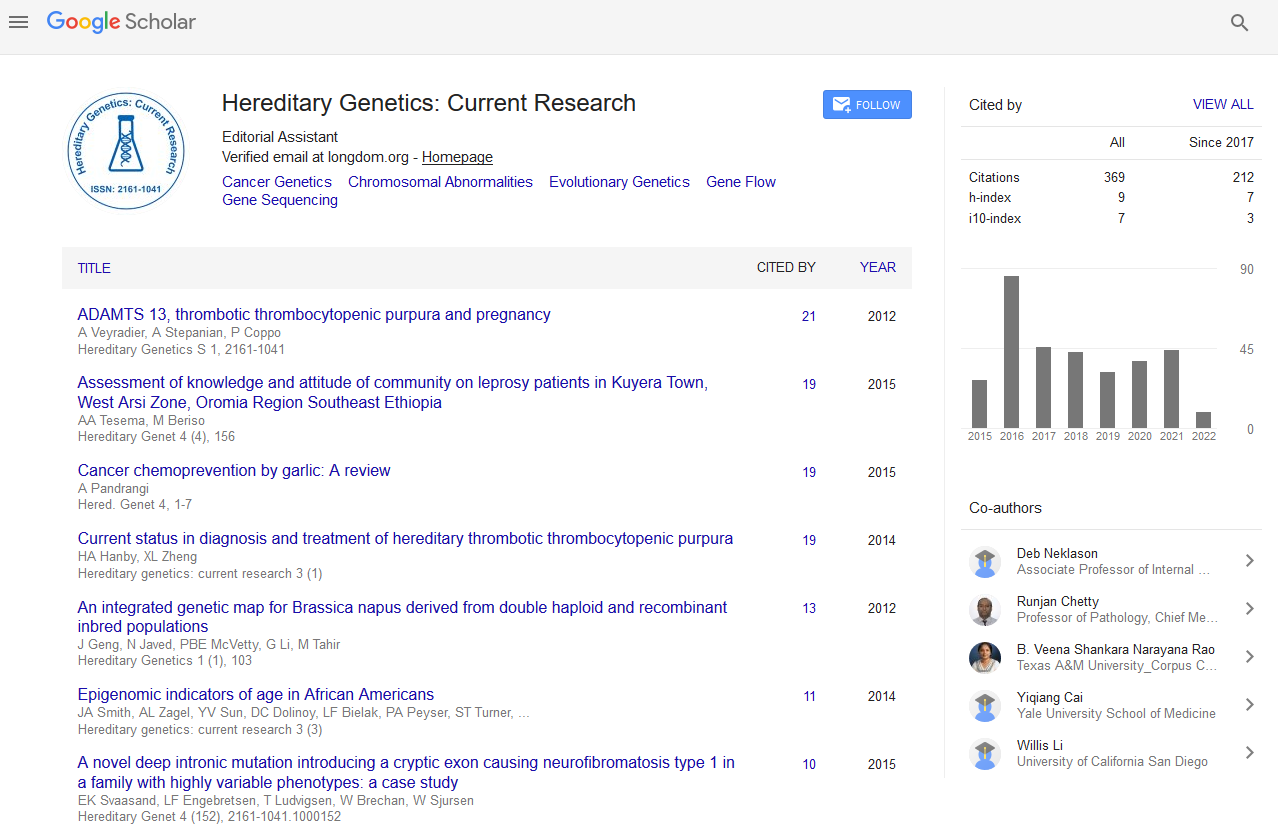PMC/PubMed Indexed Articles
Indexed In
- Open J Gate
- Genamics JournalSeek
- CiteFactor
- RefSeek
- Hamdard University
- EBSCO A-Z
- NSD - Norwegian Centre for Research Data
- OCLC- WorldCat
- Publons
- Geneva Foundation for Medical Education and Research
- Euro Pub
- Google Scholar
Useful Links
Share This Page
Journal Flyer

Open Access Journals
- Agri and Aquaculture
- Biochemistry
- Bioinformatics & Systems Biology
- Business & Management
- Chemistry
- Clinical Sciences
- Engineering
- Food & Nutrition
- General Science
- Genetics & Molecular Biology
- Immunology & Microbiology
- Medical Sciences
- Neuroscience & Psychology
- Nursing & Health Care
- Pharmaceutical Sciences
Abstract
Incorporation of an azurin from Pseudomonas fluorescens 198 coupled to CuInS2 quantum dots as photosensitizer in Gr�tzel cells
Carolina Paz Quezada, Carolina Arriaza-Echanes, Giovanna Anziani-Ostuni, Manuel IsaÃas Osorio, José Manuel Pérez Donoso
Abstract
The sun is the most clean, abundant and available source of renewable energy. First generation solar cells allow the conversion of solar radiation into electricity with an efficiency of ~25%. Nevertheless, photovoltaic market is evolving to improve production costs, efficiency and sustainability. New generation of solar cells are sensitized with different molecules like dyes, nanoparticles, and more recently proteins have been tested as photosensitizers. In this study, a redox protein (azurin) coupled to CuInS2 quantum dots (QDs) are used as photosensitizers in a Grätzel solar cell. The azurin gene was identified within the genome of a strain from our collection of Antarctic bacteria (Pseudomonas fluorescens 198). This gene was cloned and overexpressed in E. coli, and the His-tag purified azurin + CuInS2 QDs were incorporated in a sensitized solar cell, using TiO2 as anode and Pt as counter electrode. In our laboratory, biomimetic and biosynthesized nanoparticles of CdS and CuInS2, among others, have been successfully used as photosensitizers. Preliminary studies have indicated an increase in 56% of the efficiency when the azurin is incorporated to the cell, compared to the cell sensitized only with CuInS2 QDs. The efficiency is also improved when CdS QDs are coupled to the azurin (42%). The most stable orientation of the His-tag azurin in the TiO2 layer is being studied by hybrid quantum mechanics/molecular mechanics (QM/MM) calculations, in order to determine if any particular position favors the electron transference to the anode. This project is supported by FONDECYT grants 3170718 and INACH RT_26-16.
Published Date: 2020-10-25;


